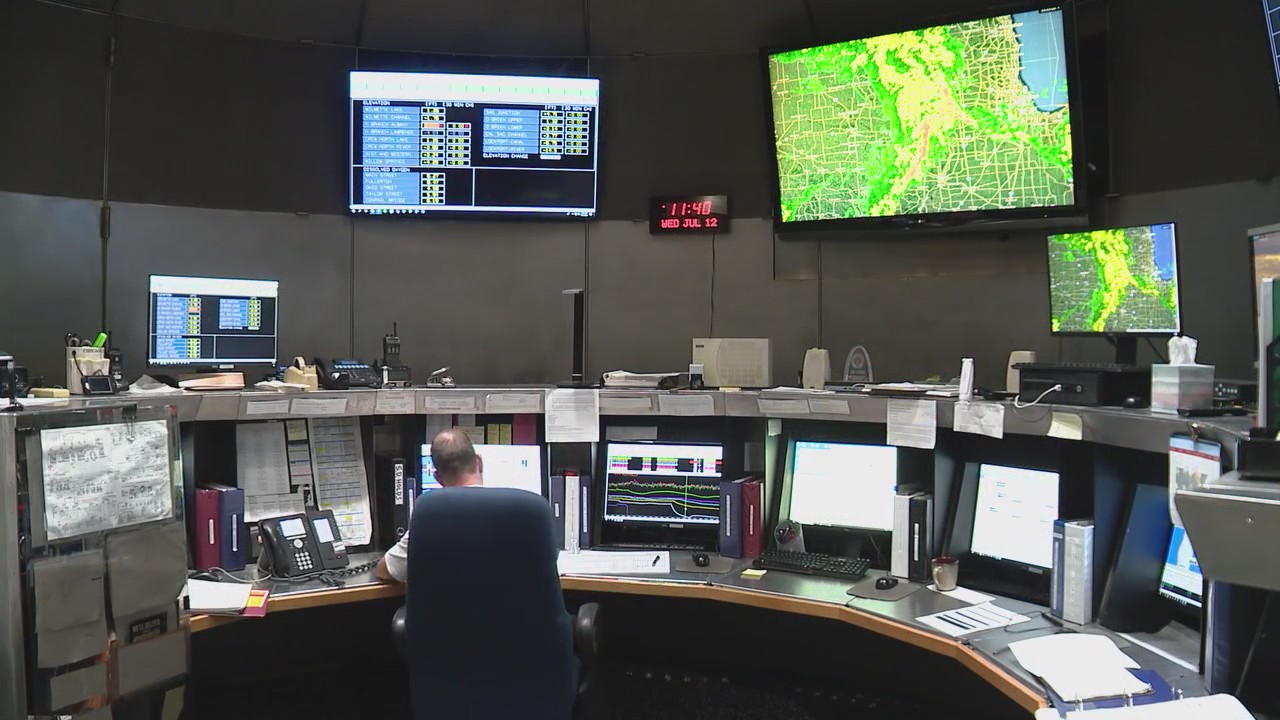Deep Tunnel under pressure: Cook County's flood control system faces climate change challenges

Cook Countys flood control system faces climate change challenges
Flooding rains over the past few weeks have focused new attention on Cook Countys massive deep tunnel system. In a FOX 32 special report, Dane Placko looks at how the system works and sometimes doesnt work as some question whether it will be able to handle more intense storms caused by climate change.
CHICAGO - Flooding rains over the past few weeks have focused new attention on Cook County's massive Deep Tunnel system.
In a FOX 32 special report, Dane Placko looks at how the system works and sometimes doesn't work as some question whether it will be able to handle more intense storms caused by climate change.
In the waterways control room at the Metropolitan Water Reclamation District's headquarters downtown, a mass of heavy rain is about to slam the Chicago area.
"We're watching a storm as it's approaching again today. We've had a lot of rain in the last week," said Ed Staudacher, MWRD’s Assistant Director of Maintenance.
This is just one part of MWRD's massive Tunnel and Reservoir Plan, better known as "Deep Tunnel."
SUBSCRIBE TO FOX 32 CHICAGO ON YOUTUBE
The nearly $4 billion flood control project started in the 1970's to prevent rainwater and sewage from flowing into rivers and Lake Michigan during heavy storms, and relieve flooding in the Chicago area, much of which was built on wetlands and swamps.
"It's huge, but we build big here in the Chicagoland area, but it's also to service this large population," said Patrick Jensen, MWRD principle civil engineer.
Jensen showed FOX 32 a map of the 109 miles of Deep Tunnel, which was bored through limestone between 150 and 300 feet underground.
"It can hold, this whole network of sewer systems or deep tunnel systems, 2.3 billion gallons of combined sewage as well as rainwater. So it is a massive network for pollution control," Jensen said.
So just how big is the Deep Tunnel? Well, the biggest pipes underground are 33 feet in diameter.
Of the four separate Deep Tunnel systems, the two largest end next to the Des Plaines River in Hodgkins where massive underground pumps push the water to the Stickney treatment plant a few miles away.
There, the water is cleaned and treated and put back into the environment.
But when the Chicago area is hit hard by storms, even Deep Tunnel can't hold all the water. That's when the reservoirs come into play.
"It fills pretty quickly, and it takes a while to empty it," said Dan Lyvers, MWRD’s chief operating engineer.
The McCook Resevoir can hold 3.5 billion gallons and the reservoir in south suburban Thornton nearly eight billion gallons of rainwater and sewage.
"Every drop of this water would have wound up in a local waterway or somebody's basement," Lyvers said.
When the rain stops, the water in the reservoirs is pumped to filtration plants where it's cleaned, then sent downriver to the Lockport dam where it eventually flows into the Illinois River and Mississippi.
That's because more than 100 years ago, engineers pulled off a miracle and reversed the flow of the Chicago River, to keep raw sewage out of the water we drink in Lake Michigan.
But sometimes Mother Nature reverses the reversal.
On July 2 and July 3, a massive storm dumped as much as nine inches of rain on the Chicago area, forcing MWRD engineers to open the locks and gates at Wilmette and the Chicago River, sending millions of gallons of untreated water and sewage into Lake Michigan.
"We're trying to protect the source of our drinking water," Staudacher said.
And while that rarely happens, there are concerns that climate change is creating bigger and more frequent rain events that will overwhelm the system.
"Unfortunately, as the situations we see with climate change and all this inundation of rain, it sometimes overwhelms the sewer capacities, as well as reaching capacity in some of the massive infrastructure that we built," Jensen said.
Construction is underway on a second reservoir in McCook that will triple the amount of water the combined reservoirs can hold - a total of 10 billion gallons. It should be ready to go online in 2029.
"If we didn't have this, all the water that would go in here would go in our waterways," Jensen said. "So that's why we have to think monumental because we get monumental storms here."

